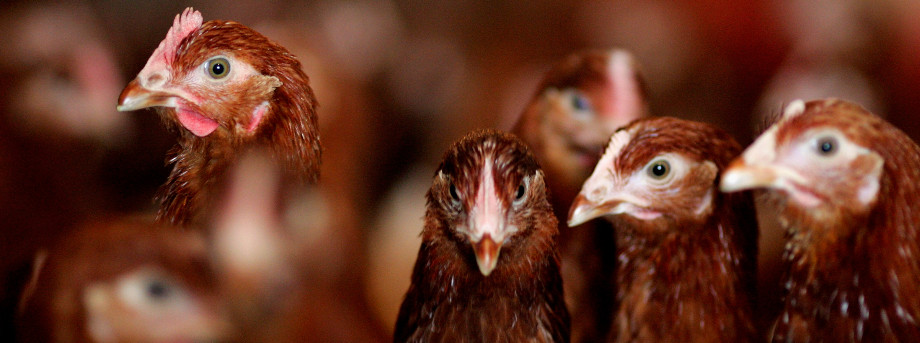The University of Nottingham
 Exchange online
Exchange online
Research Exchange
Diagnosing the past to predict the future of Salmonella infections

December 22 2014
Different strains of Salmonella behave in different ways. Understanding how and why four closely related strains evolved to lead a more host adapted invasive life-style is at the heart of new research into the evolution of Salmonella microorganisms.
Paul Barrow, Professor of Veterinary Infectious Diseases at the School of Veterinary Medicine and Science, has worked with colleagues in the Sanger Institute at Cambridge for a number of years on the Salmonella strains, S. Gallinarum and S. Pullorum in chickens and S. Dublin in cattle. All three strains cause typhoid-like symptoms in chickens and cattle and they are also closely related to S. Enteritidis — the bug that causes severe food-poisoning in humans.
Professor Barrow said: “Invasive Salmonella infections in humans are rare but can be severe and life-threatening. Shedding light on how human and animal pathogens arose in the past could potentially allow us to predict how emerging pathogens will evolve in the future.”
The new research carried out at several research centres including the Sanger Institute and the University of Liverpool — Patterns of genome evolution that have accompanied host adaptation in Salmonella — has been published today, Monday 22 December 2014, in the academic journal the Proceedings of the National Academy of Sciences of the United States of America (PNAS).
Evolution at the level of the microorganism
Previous research by Professor Barrow and his colleagues at these institutions has shown that the four strains are taxonomically and genetically closely related. The current sequencing and SNP analysis suggested that evolution occurred from a more generalist infection-type towards a more host-adapted type as a result of gene exchange and loss and chromosome rearrangement involving surface fimbrial genes and metabolic pathways.
Professor Barrow said: “A small cluster within the food-poisoning strain S. Enteritidis was the ancestral form for the other avian groups of Salmonella evolving towards a greater host-adaptation as more genes loss occurred. Interestingly, this is also associated with a “life-style” involving invasive infection and typhoid diseases as opposed to gut colonisation which is more usually associated with Salmonella.”
This information will be used to identify those components of the bacteria that stimulate the immune response so that we can begin to develop better vaccines and other approaches to immune-modulation.
Tags: bacteria, Cambridge, cattle, chickens, food poisoning, genome evolution, immune response, immune-modulation, Proceedings of the National Academy of Sciences of the United States of America, Professor Paul Barrow, research, S. Enteritidis, Salmonella infections, Salmonella microorganisms, Sanger Institute
Leave a Reply
Other News

Top prize for quantum physicist
A University of Nottingham physicist has won a prestigious medal from the Institute of Physics for […]

Zero carbon HOUSE designed and built by students comes home
Design and construct a low cost, zero carbon, family starter home, transport it to Spain, build […]